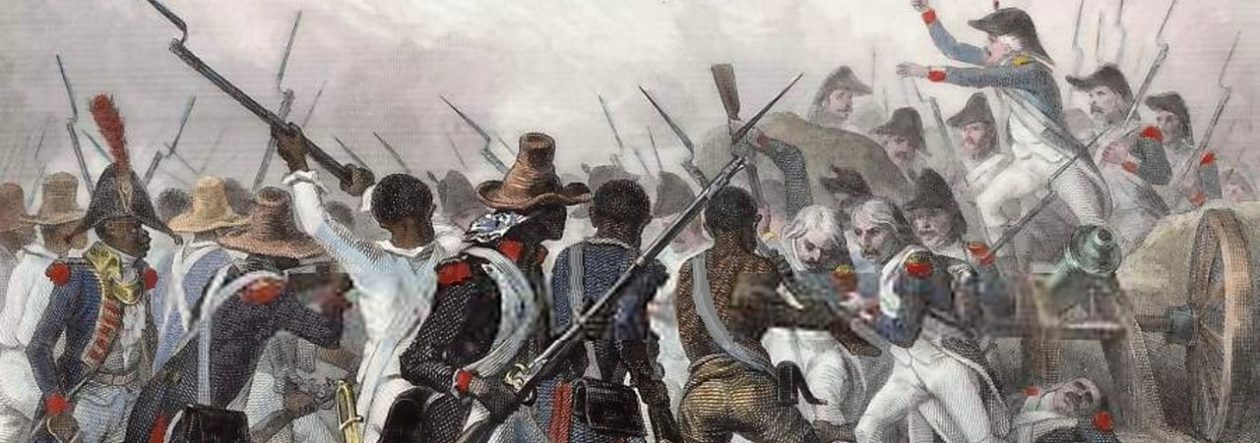by Jack Davis
The Royal Green Jackets Museum is one of several military museums at the former Peninsula Barracks in the historic city of Winchester. The museum chronicles the story of the famous Royal Green Jackets from their beginnings in the mid 18th century, through to the amalgamation into The Rifles today. Boasting an impressive collection of artefacts, the museum captivates the imagination and showcases military history in an impressive way.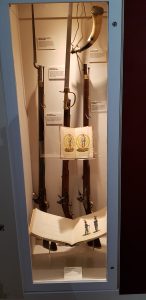
On the 17th of April 2019, myself and two other ambassadors, Rory and Arlo, travelled to Winchester and met outside the impressive Peninsula Barracks. Winchester itself is a gorgeous city, rich with medieval buildings, a bustling high street, and a very impressive cathedral. It was a shame that my time in Winchester was limited, although now it is certainly a place to revisit over the summer! We soon made our way through the gates of the barracks and into the museum and were welcomed by the museum’s curator, Christine Pullen. We were then left to our own devices to wander through the museum at our own leisure. There were many uniforms, weapons, and other items of significance in the museum, and the Brown Bess musket and Baker Rifle that you were able to pick up and feel certainly fulfilled many a childhood fantasy! The most impressive exhibition in the museum was the gigantic 25 square meter Waterloo diorama, complete with over 30,000 figures. Taking a bird’s eye approach to one of the most famous battles of the period, the diorama walks visitors through the Battle of Waterloo in painstaking detail. The Age of Revolutions period is covered very well, and aims to tell visitors the role that the Royal Green Jackets, then the rifle regiments in the British Army, played. From Copenhagen to Spain, the impact of these men in their famous green jackets was clear. The museum goes further, though, exploring the Royal Green Jackets’ role in the colonial wars of the later 19th century, and the regiment’s contributions to the First and Second World War, and the campaigns that followed.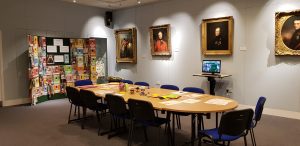 We had visited the museum as part of the project’s military history aspect, and the Royal Green Jackets Museum is one of several museums that ambassadors will be visiting, or indeed have already visited, over the next couple of weeks. The other museums are the Princess of Wales Royal Regiment at Dover Castle, the Royal Welch Fusiliers Museum at Caernarfon Castle, and the Highlanders Museum in Fort George. The aim of the project is to create a pop-up exhibition to be displayed in the museums, highlighting the role the British Army played in this period, with a particular emphasis on the Napoleonic Wars. The exhibition hopes to ‘fill in the blanks’, so to speak, with what the current museums offer with regards to Napoleonic history, exploring the history of recruitment for the British Army among other aspects. As a military history student at the University of Kent, it is sad to see that the school curriculums never seem to truly tackle military history, and so the project hopes to introduce this vital aspect of the Age of Revolutions back into schools.
We had visited the museum as part of the project’s military history aspect, and the Royal Green Jackets Museum is one of several museums that ambassadors will be visiting, or indeed have already visited, over the next couple of weeks. The other museums are the Princess of Wales Royal Regiment at Dover Castle, the Royal Welch Fusiliers Museum at Caernarfon Castle, and the Highlanders Museum in Fort George. The aim of the project is to create a pop-up exhibition to be displayed in the museums, highlighting the role the British Army played in this period, with a particular emphasis on the Napoleonic Wars. The exhibition hopes to ‘fill in the blanks’, so to speak, with what the current museums offer with regards to Napoleonic history, exploring the history of recruitment for the British Army among other aspects. As a military history student at the University of Kent, it is sad to see that the school curriculums never seem to truly tackle military history, and so the project hopes to introduce this vital aspect of the Age of Revolutions back into schools.
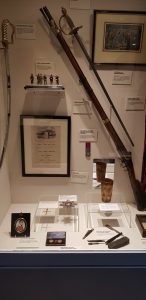
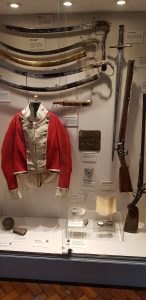
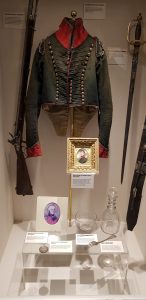
The museum has great potential for the Age of Revolutions Project, and the staff seemed enthusiastic for the future. It will be interesting to see how the project can expand upon the museum’s rich exhibitions. I would like to convey my thanks to Christine, the museum’s curator, for her warm welcome.
